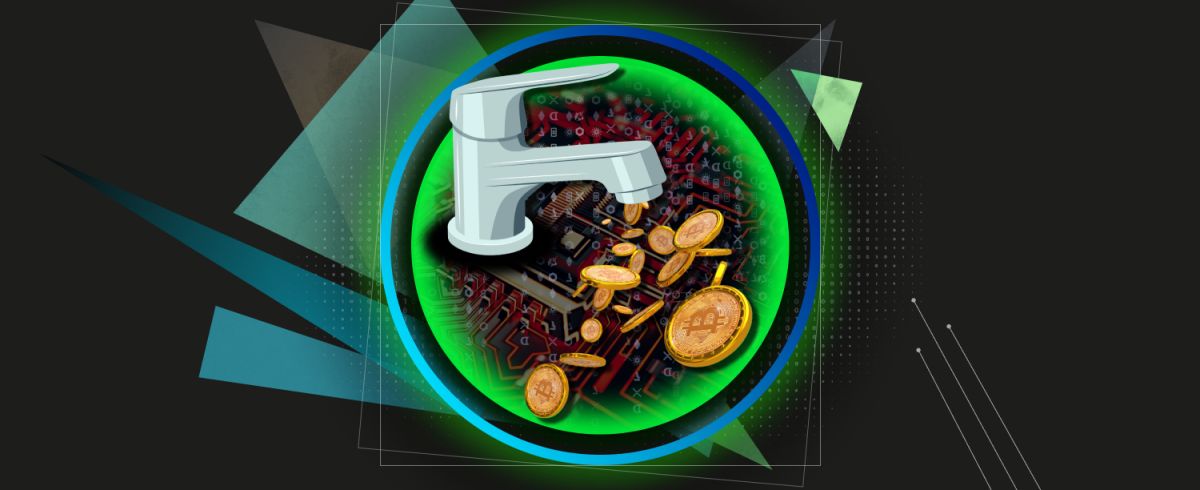Earning money via crypto faucets and airdrops

The particular feature of the crypto market is the possibility to generate income even with small amounts in the near future. Special airdrop apps take advantage of this.
People are already familiar with sampling new items at supermarkets. It's a cheap but effective alternative to traditional marketing. Manufacturers hope that many people will try their products and purchase them in the future.
Why should things be different with cryptocurrencies?
How were crypto faucets created?
The problem with mass adoption of digital money is that not many people want to learn new technologies if they do not make their lives comfortable immediately. Cryptocurrency is not a robot vacuum, and it’s not a massager with heating and vibrating. It's also not backed by Apple, a corporate goliath with an enormous marketing budget.
When Bitcoin was launched, people faced a serious problem of accepting an unfamiliar form of money. It wasn’t just weird. It was completely different from the traditional fiat money. And the only way to get BTC was to transfer money to a miner who was ready to sell some of the earned coins. Therefore, enthusiasts spread information through the direct transfer of Bitcoin directly into the hands of potential users (or rather anyone who agreed to accept some “new money” for free).
This is how `Bitcoin faucets appeared.
In 2010, the very first Bitcoin faucets worked as a basic web page with a captcha to prevent spam. Users who passed the anti-bot test received 5 BTC and the message “thank you very much for participating in our campaign.” Actually, a slow trickle of BTC was provided to those who wanted it. After the year of its existence, the first Bitcoin faucet distributed roughly 20,000 BTC.
You may be surprised to learn that you're not the only person who wants to go back in time. But would you click on a random link today if it promised free mysterious things? We believe you wouldn't do it, but crypto faucets still exist and provide small amounts of digital gold (BTC), silver (LTC), or easy-to-mine “hashed jewelry.”
How do crypto faucets work
Any website owner can create his own crypto faucet using a ready-made script. The plugin is programmed to pay Satoshi at certain intervals with a minimum withdrawal threshold.
For example, you can receive a reward every 24 hours and withdraw as soon as you collect 1,000 Satoshi (0.00001 BTC). Most faucets require registration to prevent creating duplicate accounts. Some others can track IP addresses and block the most greedy ones.
You must complete a simple task to get a coin, which solves the business problems of the website owner:
• fill out a short questionnaire;
• take part in a quiz;
• click on ad banner;
• watch ads;
• spin roulette in online casino;
• solve math example;
• write a feedback.
Faucets owners do not give away free coins just out of kindness, but for commercial purposes. They make money from advertisers, and those who are eager to get a coin are helping them with this. Collectors register on a dozen resources and check them on a daily basis, collecting Satoshi for their future “lambo”. It’s not as easy as it looks. After a few days, most enthusiasts give up, as they are tired of the same tasks and flashing ad banners. The most persistent people use bots.
Who knows what BTC will be worth in 10 years? What if these small portions will allow the holder to purchase a nice house on one of the Kuala Lumpur islands?
Airdrop: Try our token
If you like the idea of getting free crypto, then you can also try to participate in airdrops.
Many cryptocurrency projects issue their own ERC-20 tokens and make them available to users who can buy them with ETH. These projects are struggling with the age-old “chicken or egg” dilemma: they need to draw attention, but users have no financial incentive to do so until a community is formed and the token becomes popular.
To solve this problem, the projects give out part of the created contracts for free, it works for the same principle as sampling items in supermarkets. They send tokens to users who agree to accept them. More often, prior to the program's launch, posts on social networks and crypto-media pages encourage people to subscribe to the project’s channels, register on its website, retweet or post an advertisement on their page. You should help developers to spread information about the new token: increase the recognition of the ticker, talk about its features and properties.
Such an advertising campaign is called a “bounty airdrop”.
We believe that this way of earning money is a more ethical approach than through faucets. In the first scenario, you help to deceive advertisers, whereas in the second case, you contribute to the creation of a motivated community. Therefore, airdrops are still welcomed on CEX exchanges. They sometimes become the driving force behind the free distribution of tokens, sending them to traders' wallets. After that they create listings on the platform, providing the opportunity to earn on resale.
The best-known example is the Ethereum airdrop, which brought the Bounty program members over 200% per year. The same happened with the XLM token on the Blockchain.com or with dYdX on the Huobi exchange. DEX exchanges like Uniswap and 1Inch are also keeping up with this trend, giving out ERC-20 tokens (for example, UNI and DBX).
Now everyone is waiting for the Aptos airdrop. But still nobody knows in what format it will be.
It is important to remember that an airdrop is always a free promotion. If users are asked to pay for tokens, this is a definite fraud warning sign. The same goes for requesting a wallet seed-phrase or private key, as well as a fee requirement for unlocking a token on an account.
If you get such a request – you will not make a mistake by skipping it.
The content on The Coinomist is for informational purposes only and should not be interpreted as financial advice. While we strive to provide accurate and up-to-date information, we do not guarantee the accuracy, completeness, or reliability of any content. Neither we accept liability for any errors or omissions in the information provided or for any financial losses incurred as a result of relying on this information. Actions based on this content are at your own risk. Always do your own research and consult a professional. See our Terms, Privacy Policy, and Disclaimers for more details.

























